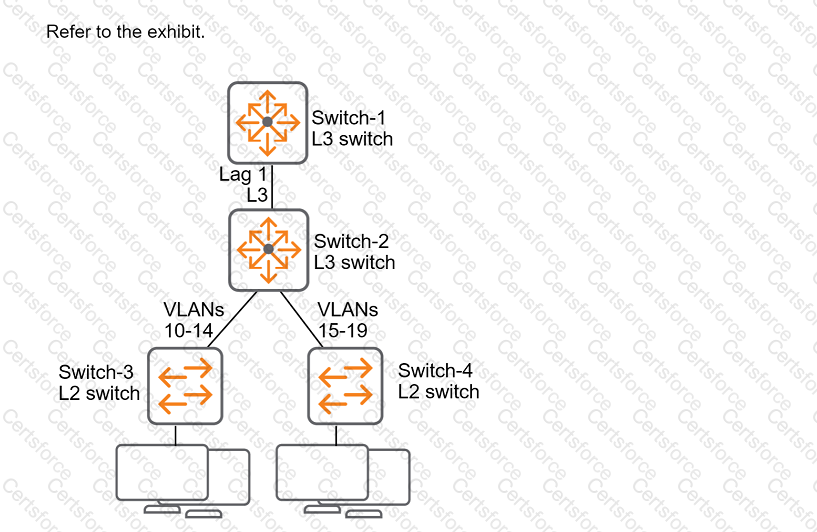A company has AOS-CX switches. The company wants to make it simpler and faster for admins to detect denial of service (DoS) attacks, such as ping or ARP floods, launched against the switches.
What can you do to support this use case?
A company wants to apply a standard configuration to all AOS-CX switch ports and have the ports dynamically adjust their configuration based on the identity of
the user or device that connects. They want to centralize configuration of the identity-based settings as much as possible.
What should you recommend?
A company uses HPE Aruba Networking ClearPass Policy Manager (CPPM) and HPE Aruba Networking ClearPass Device Insight (CPDI) and has integrated the
two. CPDI admins have created a tag. CPPM admins have created rules that use that tag in the wired 802.1X and wireless 802.1X services' enforcement policies.
The company requires CPPM to apply the tag-based rules to a client directly after it learns that the client has that tag.
What is one of the settings that you should verify on CPPM?
A company has HPE Aruba Networking APs running AOS-10 that connect to AOS-CX switches. The APs will:
Authenticate as 802.1X supplicants to HPE Aruba Networking ClearPass Policy Manager (CPPM)
Be assigned to the "APs" role on the switches
Have their traffic forwarded locally
What information do you need to help you determine the VLAN settings for the "APs" role?
A ClearPass Policy Manager (CPPM) service includes these settings:
Role Mapping Policy:
Evaluate: Select first
Rule 1 conditions:
Authorization:AD:Groups EQUALS Managers
Authentication:TEAP-Method-1-Status EQUALS Success
Rule 1 role: manager
Rule 2 conditions:
Authentication:TEAP-Method-1-Status EQUALS Success
Rule 2 role: domain-comp
Default role: [Other]
Enforcement Policy:
Evaluate: Select first
Rule 1 conditions:
Tips Role EQUALS manager AND Tips Role EQUALS domain-comp
Rule 1 profile list: domain-manager
Rule 2 conditions:
Tips Role EQUALS manager
Rule 2 profile list: manager-only
Rule 3 conditions:
Tips Role EQUALS domain-comp
Rule 3 profile list: domain-only
Default profile: [Deny access]
A client is authenticated by the service. CPPM collects attributes indicating that the user is in the Contractors group, and the client passed both TEAP methods.
Which enforcement policy will be applied?
A company is using HPE Aruba Networking Central SD-WAN Orchestrator to establish a hub-spoke VPN between branch gateways (BGWs) at 1164 site and VPNCs at multiple data centers. What is part of the configuration that admins need to complete?
What is a use case for the HPE Aruba Networking ClearPass OnGuard dissolvable agent?

All of the switches in the exhibit are AOS-CX switches.
What is the preferred configuration on Switch-2 for preventing rogue OSPF routers in this network?
A company has HPE Aruba Networking APs, which authenticate users to HPE Aruba Networking ClearPass Policy Manager (CPPM).
What does HPE Aruba Networking recommend as the preferred method for assigning clients to a role on the AOS firewall?
What role can Internet Key Exchange (IKE)/IKEv2 play in an HPE Aruba Networking client-to-site VPN?